Recognizing the subtle signs of ectropion in dogs can be crucial in safeguarding their ocular health.
While the droopy appearance of their puppy dog eyes may exude a sense of endearment, this outward rolling of the eyelids can signal underlying health concerns.
Understanding the implications of ectropion, its impact on vision, and the available treatment modalities is paramount in ensuring the well-being of our beloved canine companions.
As we explore the nuances of this condition further, it becomes evident that early intervention and diligent monitoring play pivotal roles in addressing this ocular anomaly.
Key Takeaways
- Ectropion causes eyelids to roll outward, impacting blinking and eye health.
- Larger and smaller dog breeds can be affected by genetic or trauma-induced ectropion.
- Symptoms include eye redness, discharge, and potential vision problems.
- Treatment involves veterinary evaluation, surgery for severe cases, and regular monitoring for milder cases.
Ectropion: Definition and Causes
Ectropion in dogs, characterized by the outward rolling of the eyelids, can be attributed to genetic predisposition in larger breeds such as bloodhounds and mastiffs, as well as trauma-induced occurrences at any stage of a dog's life. This condition can lead to various symptoms, including eyelid sagging, discharge, redness, and potential vision issues. Ectropion affects the ocular tissues, increasing the risk of debris entering the eye.
Veterinary evaluation is essential to determine the extent of the condition. Treatment options range from surgical correction for severe cases impacting blinking to the use of ocular lubricants for milder instances. Regular monitoring and check-ups are necessary to assess progression, with surgical intervention recommended based on the severity of the ectropion.
Breeds Predisposed to Ectropion
Certain dog breeds have a predisposition to developing ectropion, a condition characterized by the outward rolling of the eyelids. Some breeds are more commonly affected by this condition due to their genetic makeup. These breeds include:
- Bloodhounds
- Mastiffs
- Cocker Spaniels
These breeds are more likely to exhibit ectropion compared to others. It is essential for owners of these breeds to be aware of the potential risk of ectropion and to monitor their dogs' eye health regularly to detect any signs of this condition early on.
Regular veterinary check-ups can help in identifying and managing ectropion in predisposed breeds.
Impact of Trauma on Ectropion
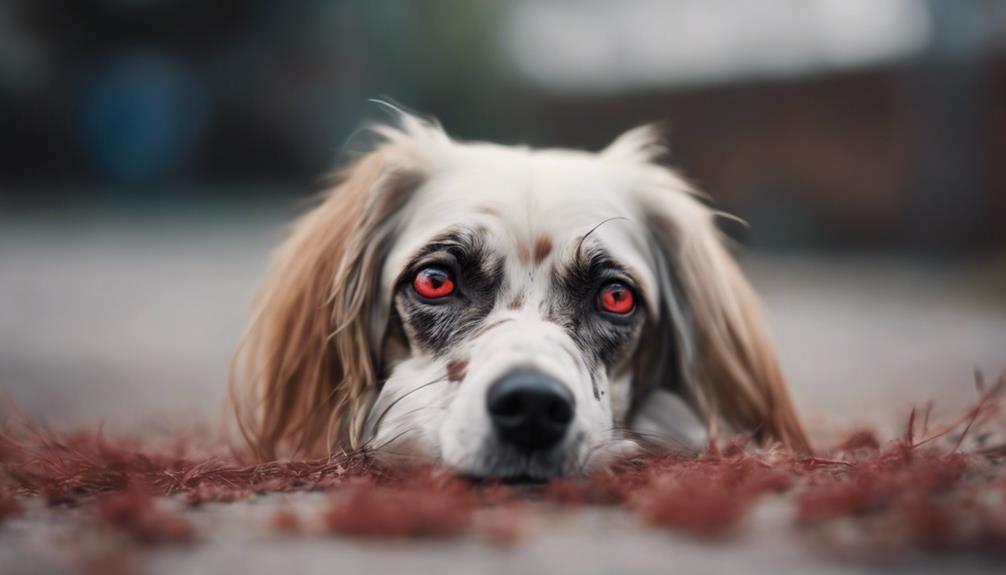
When trauma occurs to the eye area in dogs predisposed to ectropion, it can exacerbate the condition by affecting the already compromised eyelid structure. The impact of trauma can further loosen the eyelids, leading to increased sagging and outward rolling. This can worsen symptoms such as eye irritation, redness, and potential vision impairment.
Additionally, trauma can disrupt the normal functioning of the eyelids, making it harder for the eyes to effectively protect themselves from environmental debris and irritants. Therefore, it is essential to handle dogs with ectropion carefully to prevent accidental injuries to the eye area, which could worsen the condition and necessitate more aggressive treatment approaches.
Regular monitoring and prompt veterinary care following any trauma are crucial to managing ectropion effectively.
Recognizing Symptoms of Ectropion
Symptoms of ectropion in dogs can manifest as noticeable sagging or outward rolling of the eyelids, often accompanied by redness and discharge buildup in the eye. When observing your dog for signs of ectropion, keep an eye out for the following key indicators:
- Excessive tearing or watery eyes
- Constant eye rubbing or pawing
- Irritation and inflammation around the eye area
These symptoms may vary in intensity depending on the severity of ectropion in your dog. It is essential to consult a veterinarian if you notice any of these signs to address the condition promptly and prevent potential complications.
Effects of Ectropion on Vision
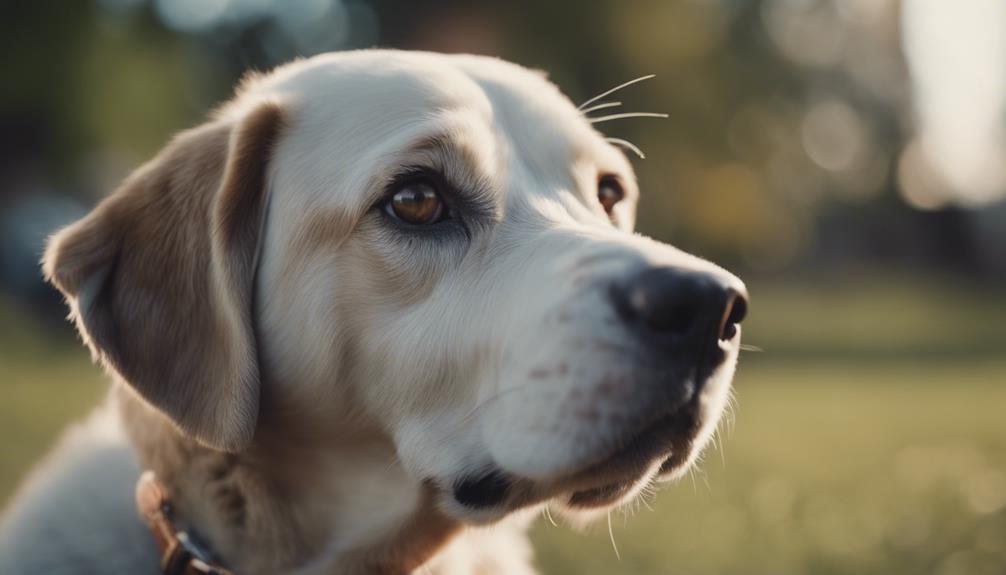
The impact of ectropion on a dog's vision can range from mild discomfort to serious vision-threatening consequences. Ectropion, by causing the eyelids to roll outward, can lead to a range of vision issues. The condition can result in increased exposure of the eye surface, causing irritation, redness, and discomfort.
In more severe cases, ectropion can affect the normal functioning of the eyelids and tear ducts, leading to inadequate lubrication of the cornea. This can result in dry eyes, corneal ulcers, and potential vision impairments. Regular evaluation by a veterinarian is essential to monitor the condition and prevent any long-term damage to the dog's vision.
Prompt intervention and appropriate management can help alleviate symptoms and preserve the dog's eyesight.
Ocular Tissue Complications
Ectropion in dogs can lead to various complications involving the ocular tissues, necessitating careful monitoring and appropriate management strategies. When ectropion affects the ocular tissues, several complications may arise, including:
- Increased risk of eye infections due to the inability of the eyelids to protect the eye adequately.
- Chronic irritation and inflammation of the conjunctiva, leading to discomfort and potential damage to the cornea.
- Excessive tearing and discharge, which can further contribute to the accumulation of debris and compromise ocular health.
These complications highlight the importance of early detection and proactive treatment to prevent further issues and maintain your dog's ocular well-being.
Treatment Approaches for Ectropion
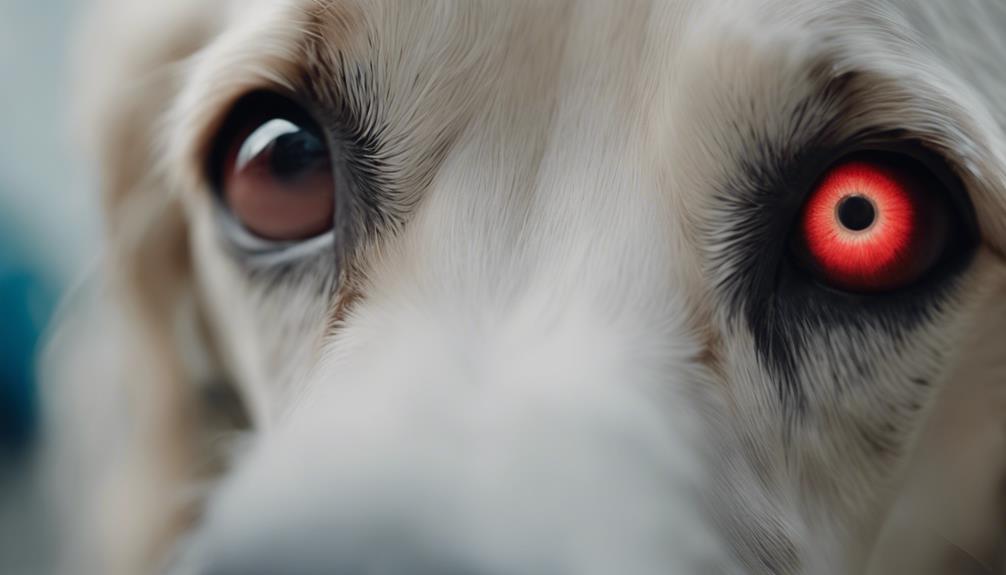
Complications arising from ectropion in dogs necessitate a strategic approach to treatment to preserve ocular health and prevent further issues. In mild cases, management can involve the use of ocular lubricants to alleviate symptoms and maintain eye moisture.
However, surgical intervention is often recommended for more severe instances where the ectropion significantly impacts the dog's ability to blink properly, leading to potential eye irritation, infections, or vision impairment. The surgical procedure aims to correct the outward rolling of the eyelids, restoring their normal position to prevent debris from accumulating in the eye and reducing the risk of long-term complications.
Regular post-operative follow-ups are essential to monitor the dog's progress and ensure optimal eye health.
Importance of Veterinary Evaluation
An accurate assessment by a qualified veterinarian is essential in determining the appropriate course of action for managing ectropion in dogs. When dealing with this condition, here are three key reasons why veterinary evaluation plays a crucial role:
- Identification of Underlying Causes: Veterinarians can pinpoint any genetic predispositions, trauma-related issues, or secondary infections contributing to ectropion.
- Customized Treatment Plans: Based on the severity of the condition and its impact on ocular tissues, veterinarians can tailor treatment strategies to suit the individual dog's needs.
- Monitoring Progress: Regular check-ups allow for monitoring the effectiveness of the chosen treatment plan and making necessary adjustments to ensure the best outcome for the dog.
Surgical Intervention for Ectropion
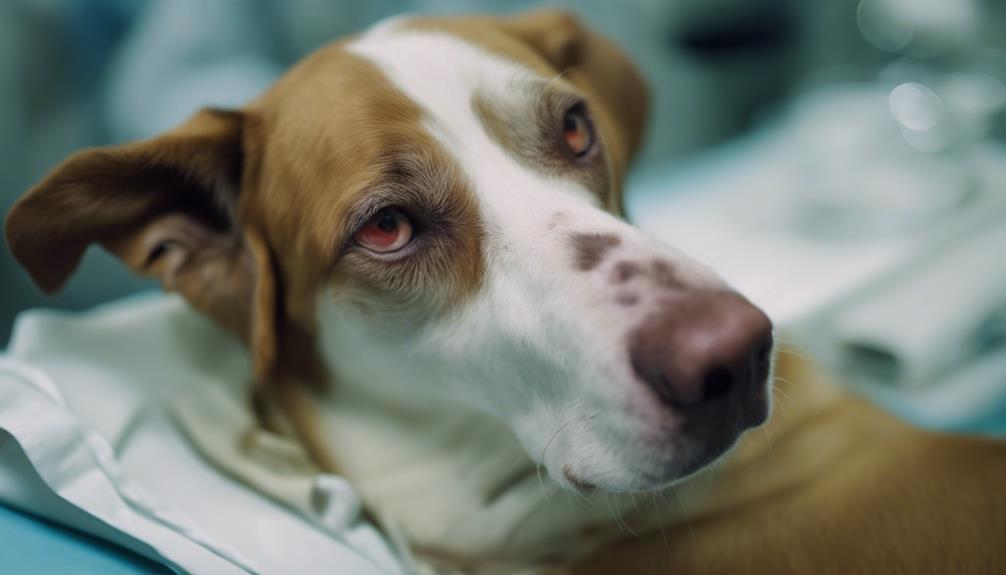
When addressing ectropion in dogs, surgical intervention becomes a crucial consideration to rectify the eyelid malposition and restore proper ocular function.
In cases where ectropion significantly impairs the dog's ability to blink properly or causes discomfort, surgery is often the recommended course of action. The procedure aims to correct the outward rolling of the eyelids, helping to prevent further damage to the eye and improving the overall comfort and health of the affected dog.
Surgical intervention for ectropion typically involves tightening the eyelid muscles and repositioning the eyelids to ensure they cover the eye adequately.
Post-surgery, diligent care and follow-up with the veterinarian are essential to monitor the healing process and ensure the best possible outcome for the dog's ocular health.
Management With Ocular Lubricants
Managing ectropion in dogs can involve the use of ocular lubricants to help alleviate symptoms and maintain eye health. Ocular lubricants can provide relief by keeping the eye moisturized and reducing irritation.
Here are three important aspects to consider when using ocular lubricants for managing ectropion in dogs:
- Choose preservative-free lubricants to minimize potential irritation.
- Apply the lubricant as directed by your veterinarian to ensure proper dosing and effectiveness.
- Monitor your dog for any signs of improvement or worsening of symptoms while using the lubricant.
Monitoring Ectropion Progression
Considering the importance of maintaining optimal eye health in dogs with ectropion, regular monitoring of the condition's progression is essential to ensure timely intervention and appropriate management. Monitoring can help track changes in the eyelids, ocular tissues, and overall eye health. Below is a table summarizing key aspects to monitor in dogs with ectropion:
| Aspect to Monitor | Frequency of Monitoring |
|---|---|
| Eyelid position | Every 2-4 weeks |
| Ocular discharge | Weekly |
| Redness in the eye | Bi-weekly |
| Blinking mechanism | Monthly |
| Vision changes | Bi-monthly |
Regular and consistent monitoring can aid in detecting any worsening of ectropion and guide treatment decisions effectively.
Surgical Correction Recommendations
Surgical correction for ectropion in dogs is a common and effective intervention to address the eyelid malformation. When considering surgical correction for your dog's ectropion, it is important to keep the following recommendations in mind:
- Consult with a veterinary ophthalmologist to determine the best course of action for your dog's specific case.
- Discuss post-operative care instructions with your veterinarian to ensure proper healing and recovery.
- Monitor your dog closely after surgery for any signs of infection or complications, and follow up with your veterinarian as needed.
Exploring Related Eye Conditions
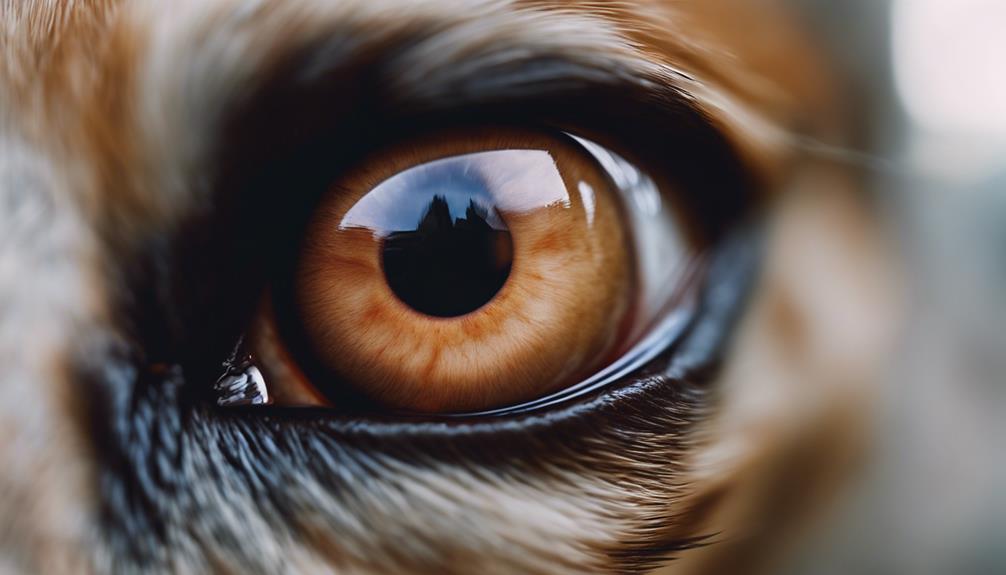
When examining eye health in dogs, understanding related conditions beyond ectropion can provide valuable insights into comprehensive ocular care. In addition to ectropion, other common eye conditions in dogs include entropion, where the eyelids roll inward, leading to potential corneal damage.
Cataracts, characterized by clouding of the lens, and glaucoma, an increase in intraocular pressure, are also crucial to monitor. Recognizing signs of eye infections in cats, such as excessive tearing or squinting, can aid in prompt treatment.
Preventing heat exhaustion in dogs during hot weather is essential to avoid ocular issues related to dehydration. By exploring these related eye conditions, pet owners and veterinary professionals can work together to ensure optimal eye health and overall well-being for their furry companions.
Additional Pet Health Resources
Exploring a diverse range of reliable sources and references can significantly enrich one's knowledge base regarding pet health and wellness. Here are some additional resources and information to help pet owners stay informed and proactive:
- Understanding the Significance of a Black Spot on a Dog's Tongue
- Stay Updated with Terms of Service and Sign Up for Newsletters for More Pet Care Information
- Review Articles on Various Pet Health Topics to Broaden Your Knowledge Base
Conclusion
In conclusion, ectropion in dogs is a condition characterized by outward rolling of the eyelids, predominantly affecting larger breeds. Recognizing symptoms such as sagging eyelids and ocular redness is crucial for early intervention to prevent vision-threatening complications.
Veterinary evaluation, surgical correction for severe cases, and regular monitoring are essential in managing ectropion effectively. By understanding the causes, symptoms, and treatment options for this ocular disorder, pet owners can ensure the well-being of their furry companions.




